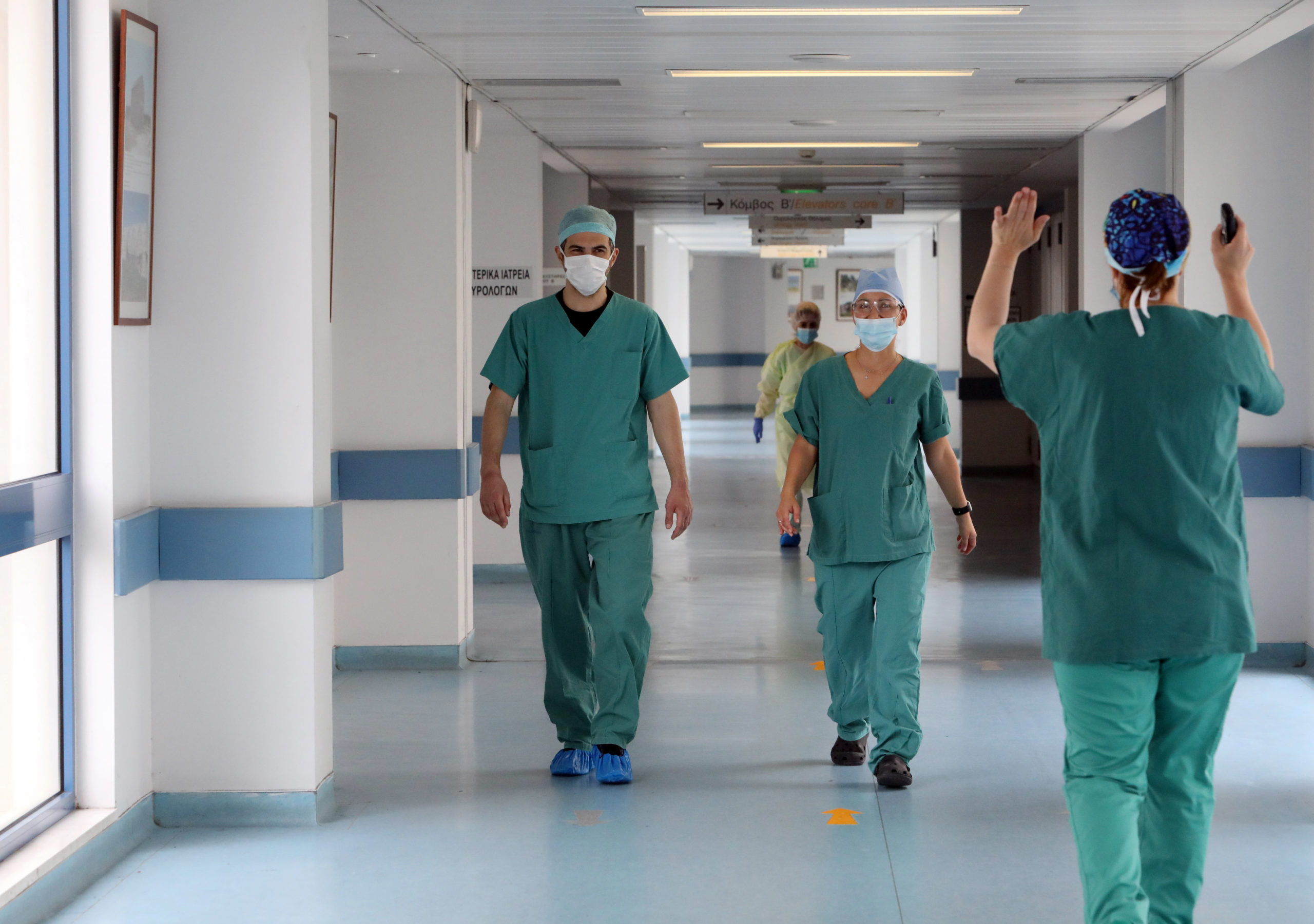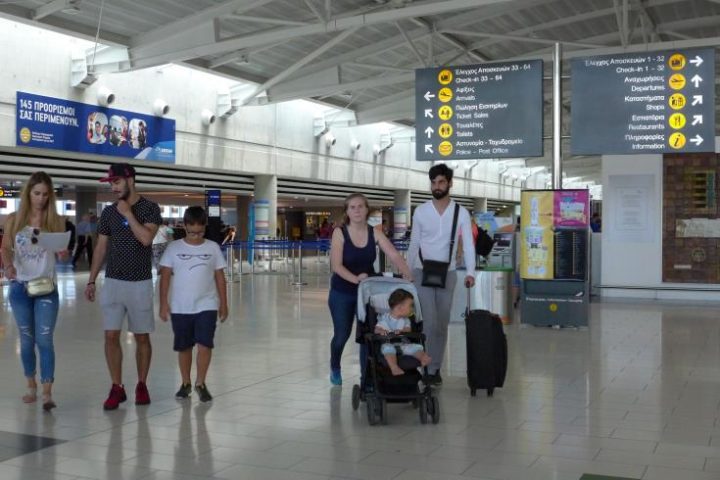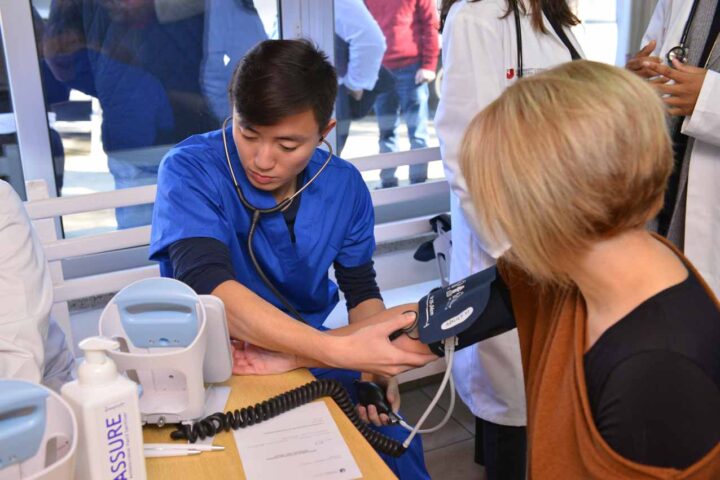Cyprus healthcare workers and those aged over 60 are the most affected by the coronavirus pandemic, making up 46% of all COVID-19 cases, latest data indicates.
Health Ministry data shows health workers being the largest group of professionals stricken by COVID-19, as one out of five cases involves a health professional.
With 878 cases reported as of May 5, 21.4% of cases involved a healthcare worker, 4.4% physicians, 10.8% nurses, 1.5% other health occupations, and 4.7% auxiliary staff.
Meanwhile, one in four cases (24.7%) was aged over 60.
By age group, cases included 51 infants, children and adolescents aged 0-17 (5.8%), 610 adults aged 18-59 years (69.5%), and 217 persons aged 60 years and older (24.7%)
Cyprus can boast it kept the mortality rate of COVID-19 at the low end of the scale, at 2.4% of known cases.
Cyprus has also contained the spread of coronavirus, as the reproductive rate (R0) of COVID-19 is now below 1, meaning that each infected carrier transmits the virus to less than one person.
As of May 5, 21 deaths were reported in Cyprus (Case Fatality Rate – CFR: 2.4%).
The mortality rate for COVID-19 is 2.4 per 100,000 population.
This is significantly lower than Italy’s 13.7% and the UK’s 15.1%, Greece’s death rate stands at 5.5% and Sweden’s at 12.2%.
Seventeen deaths (81%) occurred in men and four (19%) in women; the median age of all deaths was 76 years (IQR: 67-79 years).
Seven deaths were reported in Larnaca, six in Paphos, three each in Nicosia and Famagusta and two in Limassol.
However, based on a methodology adopted by the Health Ministry only 15 deaths were directly caused by the virus.
The reproductive rate of COVID-19 is between 0.6 and 1.3. The Epidemiological monitoring unit has used three modules to calculate the R0 with the high end of calculations in two scenarios being 1.1 and 1.3.
Dr George Nicolopoulos, professor of epidemiology and a member of the unit, said that keeping the reproductive rate below 1 was the key which allowed authorities to relax lockdown measures.
He said it is more probable for the R0 to be under 1 but close, significantly higher than the high-end of 0.7 reported in last week’s data.
Keeping the reproductive rate below 1 is also crucial for future stages of relaxing restrictions, which is why epidemiologists urge people to abide by hygiene and self-protection measures like washing hands and wearing a mask in crowded places.
Case distribution by district
Among all cases, 337 (38.4%) were reported in Nicosia district, 229 (26.1%) in Larnaca, 155 (17.7%) in Paphos, 97 (11.0%) in Limassol, 41 (4.7%) in Famagusta, and 19 (2.2%) were reported either in the British Bases or had a residence abroad, or information was not available.
Notably, 121 cases (13.8%) were reported in Aradippou, a municipality in the Larnaca district. Cases in Aradippou, including a cluster in a local bakery production line, are mainly males (58.7%) and the median age is 49 years (IQR: 33-62 years).
If the cluster is excluded, cases are mainly female (53.8%; n = 50) and the median age is 55 years (IQR: 42-69years).
Cyprus boasts one of the highest testing rates as a total of 66,876 tests have been performed as of 5 May (7,635.1 per 100,000 population), significantly higher than other countries around the globe.
Italy performs some 3,717.7 for every 100,000, while South Korea does 1,239.9 tests.
Case figures may shoot up after the reopening of sectors of the economy and schools.
A Health Ministry decrees oblige every employee in the food and beverage chain of supply and retail shops to get tested.
Some 20,000 students and teachers will be tested when schools are to reopen on 21 May.
The state has offered an additional 20,000 free tests for frontline workers who returned to work as on 4 May.
However, the number of confirmed cases is currently following a downward trend with Cyprus keeping new cases in the single-digit range.
In total, 19.3% of people with COVID-19 received hospital care, and 124 patients (73.4%) have been discharged from the hospital.
The median age of hospitalized patients was 62 (IQR: 49-73 years). Hospitalized cases were mainly males (65.1%)
Overall, 32 cases (18.9% of all hospitalized patients) have been admitted to ICU, of which 6 were still in ICU.
A total of 27 ICU patients (83.4%) have been intubated, of which 5 (83.3% of all patients currently in ICU) are still intubated.
The overall median length of stay in ICU (for all 32 ICU cases, considering those still in ICU until May 5th) was 10.5 days (IQR: 8-27 days)










